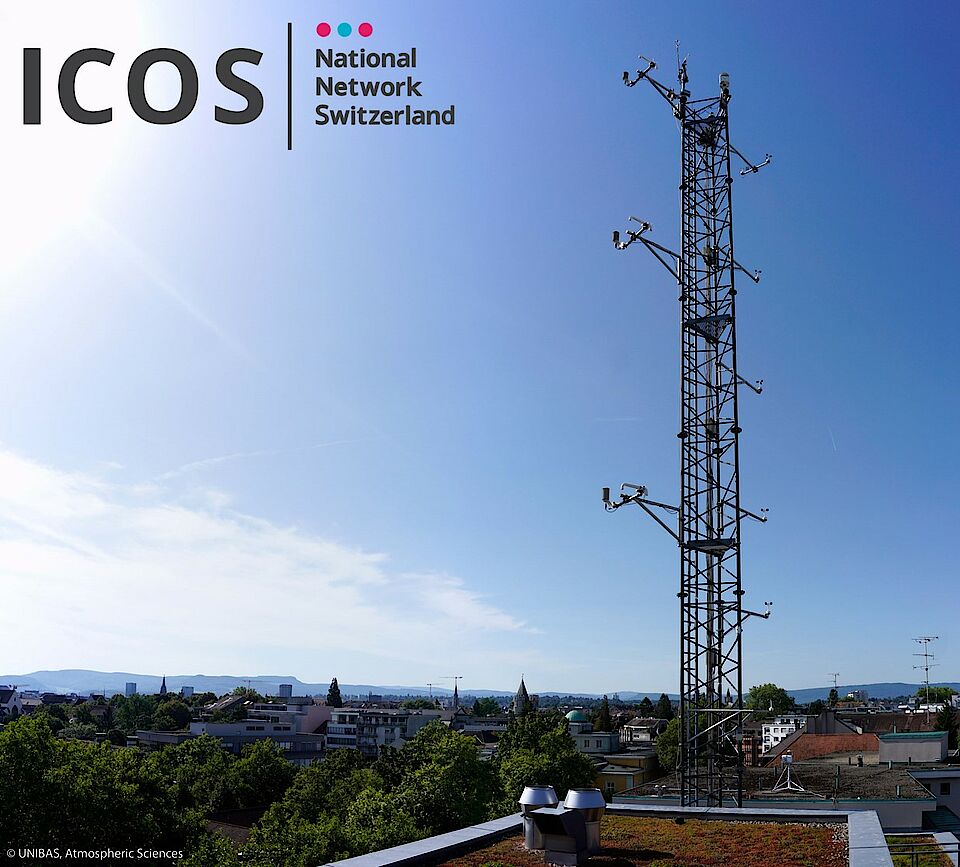ICOS Switzerland
ICOS Switzerland is the Swiss contribution to the Integrated Carbon Observation System Research Infrastructure ICOS RI and is a cooperation of several research institutes. ICOS-CH has been funded by the European Commission (Preparatory Phase, 2008-2012), the Swiss National Science Foundation (SNSF), in-house contributions, and the State Secretariat for Education, Research and Innovation (SERI) since 2013. https://www.icos-switzerland.ch/
The Atmospheric Sciences group is a member of ICOS Switzerland consortium since 2021 and runs a candidate ICOS associated station in the city center of Basel, providing unique long-term datasets of urban CO2 fluxes.

Responsible team members
Related projects

ICOS Cities (PAUL – Pilot Applications in Urban Landscapes) is a Horizon 2020 project that aims to develop a systematic greenhouse gas measurement system for urban areas. ICOS Cities will bring together and evaluate the most innovative measurement approaches of greenhouse gas emissions in densely populated urban areas. The project supports the European Green Deal and aims at developing useful tools and services for cities in support of their local climate action plans. https://www.icos-cp.eu/projects/icos-cities-project
Duration: 2022 - 2025
Key Publications
Nicolini, G., Antoniella, G., Carotenuto, F., Christen, A., Ciais, P., Feigenwinter, C., Gioli, B., Stagakis, S., Velasco, E., Vogt, R., Ward, H.C., Barlow, J., Chrysoulakis, N., Duce, P., Graus, M., Helfter, C., Heusinkveld, B., Järvi, L., Karl, T., Marras, S., Masson, V., Matthews, B., Meier, F., Nemitz, E., Sabbatini, S., Scherer, D., Schume, H., Sirca, C., Steeneveld, G.J., Vagnoli, C., Wang, Y., Zaldei, A., Zheng, B., Papale, D., 2022. Direct observations of CO2 emission reductions due to COVID-19 lockdown across European urban districts. Sci. Total Environ. 830, 154662. https://doi.org/10.1016/j.scitotenv.2022.154662
Spirig, R., Feigenwinter, C., Kalberer, M., Parlow, E., Vogt, R. (2021): Dolueg A Measurement Network's Face. Bull. Am. Meteorol. Soc., 102 (7). pp. 629-631. https://doi.org/10.1175/BAMS-D-20-0196.1
